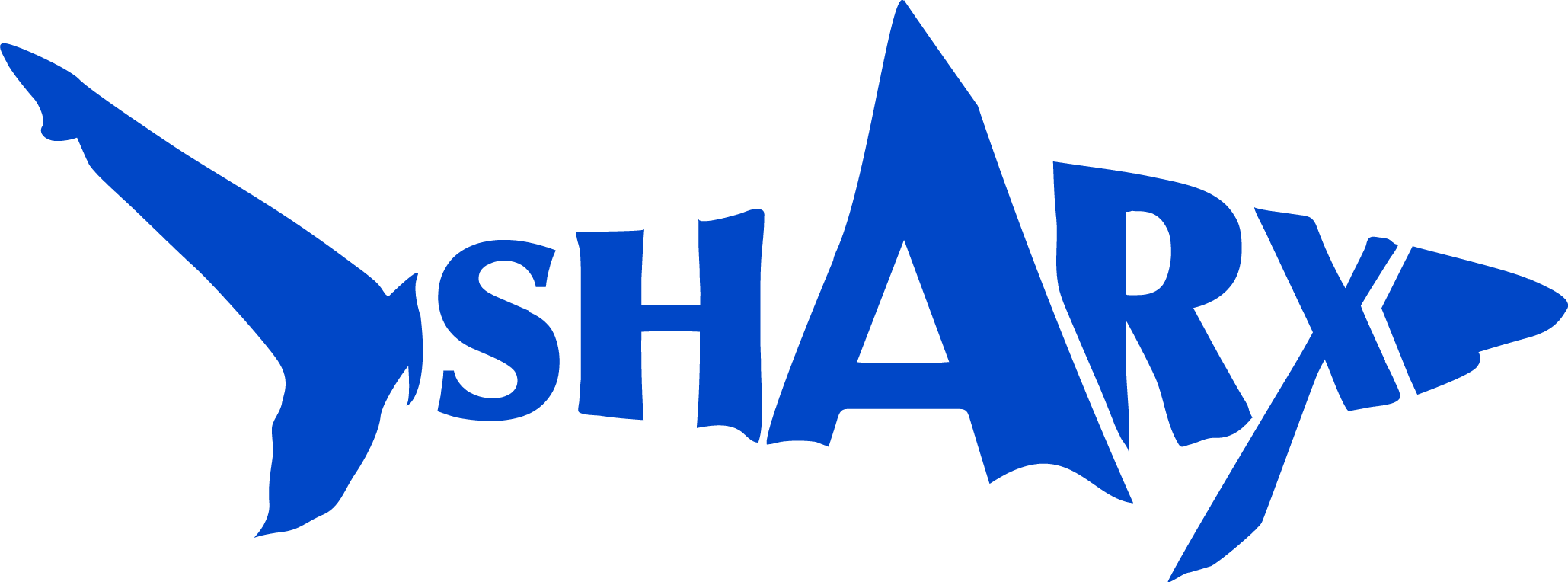Glossary
Access:
The ability to obtain or get to something. SHARx ensures members have access to life-saving medication.
Advocate:
A SHARx team member who guides and supports members in accessing high-cost medications, providing personalized, ethical, and compassionate assistance throughout the process.
Affordable:
Reasonably priced. SHARx works to make high-cost medications affordable for both employers and employees.
Alternative Funding Program (AFP):
At SHARx, we reference AFPs primarily to educate and contrast our approach—highlighting that SHARx provides a fully ethical, transparent, and compliant alternative for employers and employees seeking affordable access to high-cost medications. We do not fall under the traditional definition of an AFP. Traditional AFPs share in the success of getting a medication provided by or funded by a manufacturer program via a percentage of savings. They make more money when the drug costs more (profit on the problem). They only get paid when a member uses their service, creating a misaligned incentive to only work on the most expensive medications.
Barrier:
Any obstacle that prevents a patient from getting a needed medication, such as high-cost pricing or complex rules, regulations, or stipulations.
Benefits Plan:
A set of non-wage compensations offered by an employer to its employees in addition to their regular salary or wages. These plans are designed to attract and retain talent by providing financial and health security. They typically include health insurance, retirement plans, paid time off, disability insurance, and life insurance. These packages impact an employee’s overall well-being.
Biologics:
Complex, large-molecule medications derived from living organisms, often used for chronic or rare conditions; SHARx programs help members access biologics safely and affordably.
Biosimilar:
A biologic medication highly similar to an FDA-approved reference biologic, offering safe and effective alternatives to high-cost treatments; SHARx guides members and employers in accessing these options ethically and cost-effectively.
Broker:
An independent agent who helps businesses purchase insurance and other benefits. Brokers are essential to SHARx as they have the greatest amount of access to employer groups that can benefit from the SHARx programs.

Burden:
A heavy load, either literal or figurative. It can be something physically difficult to carry, or it can be a responsibility, duty, or worry that causes hardship. The burden of high-cost prescription spend often affects company bottom lines.
Change:
The essential shift away from the current broken system.
Compassion:
Sympathetic concern for the misfortunes of others. Our current healthcare system lacks compassion for patients, while SHARx is founded on it.
Consultant:
A professional who advises employers on their benefits and health plans.
Controlling healthcare costs:
Prescription spending is not an unexpected cost and can therefore be approached with strategic procurement solutions to help control Rx spend.
Copay/ copayment:
A fixed amount you pay for a specific service, like a doctor’s visit or a prescription refill, after your deductible has been met.
Cost-Containment:
The practice of controlling or reducing business expenses to prevent them from increasing and to improve efficiency. It’s a proactive strategy to manage spending without sacrificing quality or core business function.
Cycle:
A series of events that are regularly repeated in the same order. Employers are stuck in the cycle.
Deductible:
The amount you must pay each year for covered medical services before your insurance plan begins to pay.
Dilemma:
The difficult choice employers face between providing expensive coverage and risking their financial stability.
Disrupt the norm:
A phrase for SHARx’s innovative approach to prescription procurement.

Disruption:
Act of interrupting or breaking a process or activity. A central theme advocating for a positive change to the status quo in the pharmaceutical and insurance industries.
Ethical solution:
A key differentiator from the competition.
Ethics:
Moral principles. SHARx is an “ethical solution” in an “unethical climate,” suggesting that the current system lacks moral integrity. SHARx was founded on the principles of increasing prescription access to all.
Employee benefits:
Programs and services, including SHARx’s medication access solutions, that employers provide to support the health, well-being, and financial security of their employees.
Employees:
An individual covered under an employer’s plan whose prescription access and medication costs SHARx’s solutions help manage and optimize.
Employers:
A company or organization that provides health benefits to its employees and partners with SHARx to improve access to high-cost medications while managing plan costs.
Empower the patient/employer:
SHARx’s core mission.
ERISA (The Employee Retirement Income Security Act):
Sets standards for employer-sponsored health plans; SHARx helps employers maintain compliance while providing ethical medication access solutions.
Exclusions:
Medications, treatments, or services that are not covered under a benefit program or an employer’s plan, and therefore require alternative access.
Exorbitant prices:
Extremely high prices, often beyond what is reasonable. This term is used to describe the cost of medications charged by PBMs and manufacturers.
Experience:
The knowledge or skill gained from a particular activity, event, or field over time. It can also refer to the process of personally encountering or living through something.

Family:
A group of people related to one another through blood, marriage, or adoption. It is a fundamental social unit in most societies, providing emotional, financial, and physical support to its members. Not only does high-cost prescription medications affect employers and their employees but also the carrier’s family and dependents.
Fiduciary duty/
responsibility:
responsibility:
The legal and ethical obligation of an employer or plan sponsor to act in the best interest of their employees and plan members. From SHARx’s perspective, this includes selecting and overseeing medication access programs that are transparent, compliant, and cost-effective.
Financial burden:
Phrases like “high-cost medications,” “astronomical costs,” “financial dilemmas,” and “financial ruin” highlight the severe economic strain on both individuals and companies.
Financial solvency:
The ability of a company to meet its long-term financial obligations. Rising health plan costs often threaten an employer’s financial solvency.
Formulary:
A list of prescription drugs covered by a health insurance plan. It is a tool used by PBMs to control which drugs are covered, often based on rebates and deals with manufacturers rather than patient needs.
Fully Insured employer health plan:
An employer pays a fixed premium to a health insurance carrier. In return, the insurance carrier assumes the entire financial risk of paying for employee medical claims.
The Game:
Refers to the devastating reality that is the pharmaceutical industry in the United States. Key players include drug manufacturers, regulatory bodies like the FDA, PBMs, wholesalers and distributors, and pharmacies and pharmacists, with patients being the end-user. Increasing existing wealth remains the primary focus of the pharmaceutical industry. They continue to paint themselves as fledgling organizations with limited resources. Big Pharma has created a monopoly, ensuring the patient in need stays dependent on them for survival. The appetite of each entity just continues to become larger and larger. In this whole game, the user of the drug and the payer for the drug have no “seat at the table”.
Generics:
Medications chemically identical to brand-name drugs but typically at lower cost; SHARx leverages generics when appropriate to reduce prescription spend for employers and members.
Greed:
The self-serving motive attributed to Big Pharma and PBMs, which the blogs claim is the primary reason for the high cost of drugs and the dysfunction of the healthcare system.
Guidance:
Advice or information that helps someone solve a problem. SHARx is a service that provides much-needed guidance to members navigating the complex system.
Health:
State of complete physical, mental, and social well-being, not merely the absence of disease or infirmity.
Healthy future:
The long-term promise of the SHARx service.

Health plan design:
The comprehensive, highly structured framework that outlines the benefits, coverage rules, financial responsibilities, and administrative components of a group or individual health insurance policy. It serves as the core operational blueprint that determines how healthcare is accessed, paid for, and managed for a defined population of members. Health plan designs are not static; they operate as a strategic component that a self-funded employer can deliberately modify and integrate with specialized vendors, such as SHARx, to manage specific high-risk benefits. SHARx operates as a specialized pharmacy procurement and advocacy solution utilized by self-funded employers to modify their plan design by intentionally carving out the financial and coverage rules related to high-cost/specialty prescription drugs. This integration shifts the management of these volatile expenses from the traditional insurance model to a predictable, cost-mitigating procurement model, thereby making the overall health plan more affordable for the employer and ensuring predictable, lower-cost access to life-saving medications for members.
Health plan sustainability:
The core financial problem for employers.
Heath savings account (HSA):
A tax-advantaged savings account used for healthcare expenses. It is only available to people who have a High-Deductible Health Plan (HDHP).
High-cost medications:
A prescription drug that is significantly more expensive than standard medications. These can include specialty medications for complex or chronic conditions, brand-name drugs without generic alternatives, biologics, and limited distribution drugs available only through specific pharmacies. Drugs with an extremely high price tag, often reaching hundreds of thousands or even millions of dollars a year. These are the main focus of the blogs and the problem SHARx aims to solve (in our case $350+).
High-cost prescriptions:
Refer to high-cost medications.
High-deductible health plans (HDHPs):
Health insurance plans known to have the lowest premium but also having astronomical, often unattainable, deductibles. With a higher deductible, individuals are then responsible for a significant amount of out-of-pocket health costs before insurance coverage kicks in. While HDHPs are incentivized by their joint offering with an HSA savings account, which do boast incredible tax advantages (that very few know of or can even take advantage of), the plans are wrought with disadvantages as well.
High drug costs:
A more general term for the main problem of the industry.
HIPAA (The Health Insurance Portability and Accountability Act):
Protects patient health information; SHARx ensures all member interactions and data handling meet HIPAA standards.
Hoops:
A metaphor for the frustrating and unnecessary obstacles patients face when trying to get medication through insurance.
Hope:
An optimistic state of mind that is based on an expectation of positive outcomes. It is a feeling of trust and a desire for a certain thing to happen. SHARx aims to instill hope in our clients and members.
Human Resources:
Department within a company that is responsible for all matters related to employees. Key functions include recruitment and staffing, employee relations, compensation and benefits, trending, and development, and compliance.

Infusion:
The administration of medication intravenously over time, often for biologics or specialty drugs; SHARx supports members in navigating infusion access, scheduling, and cost solutions.
Insurance:
A contract, represented by a policy, in which an individual or entity receives financial protection or reimbursement against losses from an insurance company. The company pools the financial risk of a large number of people or entities to make payments for the losses. Insurance is part of the system that is broken, expensive, and usually becomes a barrier to accessing medications.
J-Codes:
Billing codes used for injectable or infusible medications under medical benefits; SHARx tracks J-codes to ensure accurate coverage and cost management for high-cost therapies.
Lobbying:
Practice of attempting to influence government decisions, legislation, and policies related to the healthcare industry. It is carried out by various groups to advocate for their specific interests.
Lost Members:
Patients who are suffering in silence and are unable to navigate the healthcare system on their own. Those individuals to whom we are giving a voice and seat at the table.
Loyalty:
A strong feeling of support or allegiance.
Mail Order:
Refers to a business model where a customer places an order for a product or service through a non-retail channel (like a catalog, phone call, or website) and the item is then shipped directly to them. Patients can get their long-term or maintenance medications delivered to their home or office, often at a lower cost than a traditional retail pharmacy. This is a common service provided by Pharmacy Benefit Managers (PBMs) or large pharmacy chains.
Maze:
A metaphor for the confusing and complex structure of the healthcare and pharmaceutical industries.
Medications:
Also known as drugs, are substances used to diagnose, cure, treat, or prevent disease. They work by affecting the body’s chemistry to produce a desired health effect.
Member experience:
The direct result for the employee.
Member:
A term used to refer to employees (and their families) who are enrolled in a health plan or using the SHARx service.
Narrative:
A spoken or written account that shapes understanding or perception. From SHARx’s perspective, narratives highlight how ethical, transparent medication access solutions can improve employee health and reduce prescription cost, offering an alternative to traditional industry practices.

Out-of-pocket costs:
The expenses for medical care that you must pay yourself, rather than having them covered by your insurance company. These costs are paid “out of your own pocket” after receiving a medical service. Common out-of-pocket costs include deductibles, copays, coinsurance, and services not covered.
Over-the-Counter (OTC) Drugs:
Available for purchase without a prescription. They are used for common ailments like pain, fever, or allergies and are considered safe for self-medication when used as directed.
Partnerships:
A relationship between two or more parties working together. SHARx aims to build partnerships with brokers and employers to change the healthcare landscape.
Patient assistance programs (PAPs):
A program offered by pharmaceutical companies and other organizations to help patients who cannot afford their prescription medications. These programs provide free or low-cost drugs to individuals who are uninsured or underinsured and who meet specific eligibility criteria, usually based on income.
Patients:
Also known as members are the individuals who take the drugs. They are usually the ones who ultimately suffer from the broken U.S. healthcare system and are left without a “seat at the table.”
Per employee per month fee:
The specific payment model that makes SHARx’s service predictable and transparent.
Pharma (or Big Pharma):
Also referred to as “pharma bros,” “pharmacy giants,” “pharmaceutical industry,” “Big 3,” etc. is the term used to describe the world’s largest, most influential, and most profitable pharmaceutical companies. It is often used with a critical or negative connotation, suggesting that these companies prioritize profits over patient well-being. The blogs accuse them of charging outrageous prices and using misinformation to protect their financial interests. Controversies: The term “Big Pharma” is often associated with public criticism over issues such as: High drug prices in certain countries, particularly the United States lobbying to influence government policies and regulation, extensive marketing and advertising of prescription drug, and patent extensions that block generic, lower-cost alternatives from entering the market.
Pharmaceutical Manufacturers:
Companies that develop, produce, and distribute prescription medications, whose products SHARx helps employers and members access ethically efficiently, and cost-effectively.
Pharmacy Benefit Managers (PBMs):
Third-party administrator of prescription drug programs for health insurance companies, large employers, and other health plans. They act as a “middleman” between drug manufacturers, pharmacies, and insurers. They do this by negotiating drug prices, creating drug formularies, processing claims, and operating mail order pharmacies. Identified as key players in the broken insurance system, with a focus on their role in creating barriers and profiting from the current structure. Despite their intended purpose, PBMs have become a controversial part of the healthcare system. Critics argue that their practices, such as seeking higher rebates from manufacturers, can sometimes lead to higher drug prices for consumers and employers.
Pharmacy:
A place where medications are dispensed and sold, and where a pharmacist provides professional advice on the safe use of prescription drugs. It is also the professional practice of preparing, compounding, and dispensing medicine.
Plan:
A structured agreement that outlines what medical services are covered, how much the employee and employer will pay, and which healthcare providers are in the network. Key components include premiums, deductibles, copayments, and coinsurance. They can be offered in various forms, such as fully insured or self-funded.
Premium:
The regular payment—usually monthly—that you or your employer make to an insurance company to keep your health coverage active. It is the cost you pay for the insurance plan itself, regardless of whether you use any medical services.

Prescription drug:
The expenses for medical care that you must pay yourself, rather than having them covered by your insurance company. These costs are paid “out of your own pocket” after receiving a medical service. Common out-of-pocket costs include deductibles, copays, coinsurance, and services not covered.
Prior authorization (PA):
Available for purchase without a prescription. They are used for common ailments like pain, fever, or allergies and are considered safe for self-medication when used as directed.
Problem:
A relationship between two or more parties working together. SHARx aims to build partnerships with brokers and employers to change the healthcare landscape.
Procurement:
A program offered by pharmaceutical companies and other organizations to help patients who cannot afford their prescription medications. These programs provide free or low-cost drugs to individuals who are uninsured or underinsured and who meet specific eligibility criteria, usually based on income.
Profit:
Also known as members are the individuals who take the drugs. They are usually the ones who ultimately suffer from the broken U.S. healthcare system and are left without a “seat at the table.”
Rebates:
A payment that a pharmaceutical manufacturer makes to a Pharmacy Benefit Manager (PBM) or health plan after a drug is purchased and dispensed to a patient. The manufacturer pays the rebate in exchange for their drugs being included on the health plan’s formulary (the list of covered drugs), often in a more favorable position. Rebates are a key component of the complex drug pricing system. The manufacturer sets a list price for a drug, but the PBM or health plan negotiates a discount that is paid back to them as a rebate. The rebate amount is often tied to the volume of a drug sold or its market share.
Research & Development (R&D):
Process of discovering and developing new treatments, medications, medical devices, and diagnostic tools to improve human health. It is a critical and highly regulated process that can take many years and billions of dollars to complete. Big Pharma consistently claims that the high cost of prescription drugs is justified by the immense costs of Research & Development (R&D). This argument is a central part of their public relations and lobbying strategy. Critics dispute their claim, arguing they use the money for marketing and sales, lobbying, shareholder profits, and publicly funding research.
Restricted Formulary Access:
When a PBM limits which drugs are covered, often excluding lower-cost options (like generics or biosimilars) in favor of higher-rebate brand drugs.
Resources:
A stock or supply of money, materials, staff, and other assets that can be drawn on by a person or organization to function effectively. Resources are essential for any business or project to operate and achieve its goals. By implementing SHARx and saving on high-cost prescription spend, employers are able to allocate their resources more effectively.
Right:
A moral, legal, or social entitlement to have or obtain something or to act in a certain way. SHARx fosters a culture of morality to tackle a problem that affects so many people.
Rx spend:
A broad term that refers to the total amount of money spent on prescription medications.

Savings:
A reduction in cost. The blogs highlight the significant financial savings that employers can achieve by using SHARx.
Self-funded employer health plan:
Available for purchase without a prescription. They are used for common ailments like pain, fever, or allergies and are considered safe for self-medication when used as directed.
Any person, company, or institution that owns at least one share of a company’s stock. By owning shares, they have a claim on a portion of the company’s earnings and assets.
SHARx:
A healthcare solutions company that helps employers and members access high-cost medications through ethical, transparent, and cost-effective programs, improving affordability and the overall member experience.
Sourcing:
Also known as members are the individuals who take the drugs. They are usually the ones who ultimately suffer from the broken U.S. healthcare system and are left without a “seat at the table.”
Specialty medications:
A prescription drug used to treat complex, chronic, or rare conditions. Specialty drugs are typically high-cost, may have limited distribution through specialty pharmacies, and often require prior authorization or additional patient support services.
Specialty pharmacy:
A pharmacy that dispenses and manages high-cost, high-complexity medications for chronic or rare diseases. These drugs, known as specialty medications, often require special handling, administration, and patient support due to their complex nature and potential side effects.
Spread pricing:
Occurs when a PBM charges an employer or health plan more for a medication than what it actually reimburses the pharmacy, keeping the difference as profit.
Stakeholder:
Any person, group, or organization that has an interest or concern in a company, project, or activity. They are individuals who can affect or be affected by a business’s actions, objectives, and policies.
Stop-loss coverage:
To protect against the unpredictable and catastrophic costs of very large claims, most self-funded employers purchase stop-loss insurance. This policy acts as a safety net, reimbursing the employer for claims that exceed a pre-determined financial threshold.
Sustainability:
A moral, legal, or social entitlement to have or obtain something or to act in a certain way. SHARx fosters a culture of morality to tackle a problem that affects so many people.
The System:
A broad, overarching term for the current state of the U.S. healthcare and pharmaceutical industries. It’s consistently depicted as a “broken,” “corrupt,” and “insane” structure that prioritizes profit over people.

Third-Party Administrator (TPA):
A third-party entity that works with employer-sponsored health plans to cover high-cost specialty drugs in a non-traditional way. AFPs are typically marketed as a cost-saving solution for employers, particularly those with self-funded plans.
Transparency:
The quality of being open and honest. The blogs criticize the lack of transparency in the pharmaceutical industry, particularly regarding drug prices and PBM contracts, and highlight SHARx’s model as a transparent alternative.
Uncertainty:
The unpredictability of future high drug costs that makes budgeting nearly impossible for employers.
Underinsured:
Refers to individuals who have health insurance, but the plan is not adequate to cover a person’s medical expenses. A person might be considered underinsured if they have high deductibles and out-of-pocket costs that make it difficult to afford necessary care, even though they have a plan.
Uninsured:
Refers to individuals who have no health insurance at all. This means the individual must pay the full cost of all their medical care and prescriptions out of their own pocket.
Value:
The importance, worth, or usefulness of something. The blogs argue that the illusion of value created by the insurance industry is misleading and that SHARx provides true value.
Well-being:
